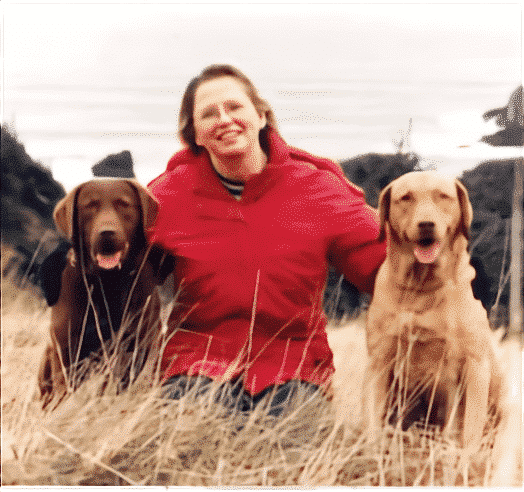Interview with Sporting Group Judge Dyane Baldwin by Showsight Magazine.
1. Where do you live? How many years in dogs? How many years as a judge?
2. What is your original breed? What is/was your kennel name?
3. Can you list a few of the notable dogs you’ve bred? Any performance or field titles?
4. How important are Performance and Companion titles in a Sporting Dog?
5. Have you judged any Sporting Breed Specialties?
6. Do you find that size, proportion, and substance are correct in most Sporting breeds?
7. Is breed-specific expression important to you as a judge? Can you offer some examples?
8. What are your thoughts on the current grooming practices among the coated breeds?
9. Are the Sporting breeds in good shape overall? Any concerns?
10. In your opinion, how do today’s exhibits compare with the Sporting Dogs of the past?
11. Why do you think the Sporting breeds make up a large portion of the typical show’s entries?
12. Just for laughs, do you have a funny story you can share about judging the Sporting Group?
Sporting Group Judge Dyane Baldwin
Where do I live? How many years in dogs? How many years as a judge? I live in Central Pennsylvania on 34.5 acres with my daughter, Jennifer. I have spent 43 years in dogs. Started judging in 1998.
What is my original breed? What is/was my kennel name? My original and only breed has been the Chesapeake Bay Retriever. The kennel name I use is Pond Hollow.
Can I list a few of the notable dogs I’ve bred? Any performance or field titles? BISS CH Pond Hollow Casablanca WD, #2 all-time sire; CH Pond Hollow Punt Gunner and his sister, CH Pond Hollow Bayberry Tides In, who are found in many pedigrees; CH Pond Hollow Morocco, a National Specialty BOB; CH Pond Hollow Bering Sea, a top sire here and in the UK; CH Pond Hollow Otter Point UD MH QAA, the first female Chesapeake to hold all of these titles and the first in 70 years to achieve them; and the co-bred dog, CH Frosty Hills Seacoast Bulrush MH QAA, who was top FT Derby dog in 2012.
How important are Performance and Companion titles in a Sporting Dog? They are important to keep a breed true to its original purpose. Giving importance to those qualities keeps you focused on maintaining working instincts, willingness to please, and sound dispositions.
Have I judged any Sporting Breed Specialties? Many: Chesapeake Bay Retriever, Wirehaired Pointing Griffon, and Flat-Coated Retriever National Specialties; Regional/Local Specialties in Golden Retrievers, English Springer Spaniels, Welsh Springer Spaniels, Cocker Spaniels, Brittanies, and English Setters. I have also judged Chesapeake Bay Retriever Specialties in the UK, Denmark, and Sweden as well at the German Retriever Club and the Danish Retriever Club Anniversary Shows.
Do I find that size, proportion, and substance are correct in most Sporting breeds? In general, yes. However, the “less popular” breeds and those that emphasize keeping the working ability (Brittany and Vizsla) tend to stay truer to their standards in terms of consistency.
Is breed-specific expression important to my as a judge? Can I offer some examples? In my breed, the Chesapeake Bay Retriever, the expression/attitude described in the standard more often has to be seen in the field than in the conformation ring. So, expression is not a big factor. In those breeds whose expressions or temperament displayed are integral parts of a breed’s type, yes, it is important. Examples would be the soft expressions of the Cocker Spaniel and the English Springer Spaniel. Harshness in the eyes in these two breeds makes for a very untypical look.
What are my thoughts on the current grooming practices among the coated breeds? In some breeds, the over-grooming is contrary to the work of the breeds. Breeds like the Wirehaired Pointing Griffon and the Spinone Italiano should never be such that the texture and somewhat “unkempt” appearance to the coats is missing.
Are the Sporting breeds in good shape overall? Any concerns? The biggest concern is the loss of serious dedicated breeders who learn and understand type for their breeds. Sporting Dogs, to me, must have the proper structural foundation for their function. Then, each breed has specifics that are integral pieces to good type—that make them the breed they are. Without breeders who understand this and select for it, the quality of a breed declines. In my breed, we are seeing some misplaced emphasis on overdone rear angulation and lack of attention to substance and the proper amount of bone.
In my opinion, how do today’s exhibits compare with the Sporting Dogs of the past? I do not think we see as many “greats,” dogs with outstanding breed type and solid, sound movement. I will say, though, that soundness in movement and temperament is better in many breeds, overall.
Why do I think the Sporting breeds make up a large portion of the typical show’s entries? Hunting is a partnership. So, to start with their purpose is to work with their owners. Nervousness and aggressiveness are undesirable traits for their purposes too. They have a wide range of size, and if proper, their coats should not require the amount of grooming of some other breeds. So, these are all appealing traits that make them desirable to live with and to do things with for many people.









